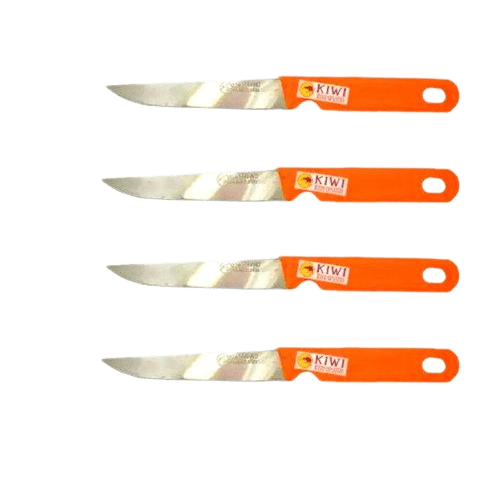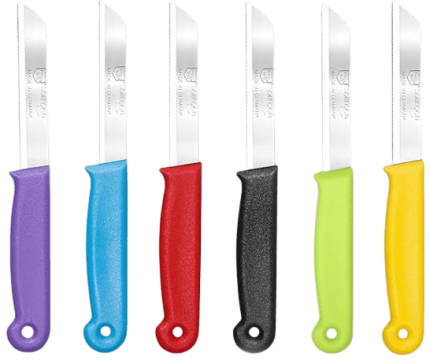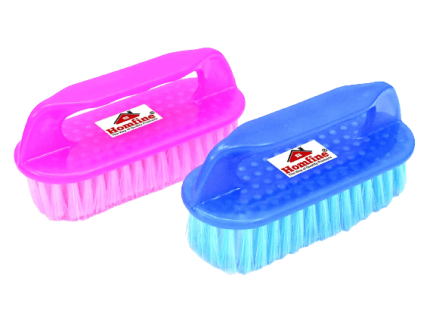Key Features:
- Blade Material: Typically made from stainless steel, carbon steel, or high-carbon stainless steel. Each material offers different benefits in terms of sharpness, durability, and ease of maintenance.
- Handle Material: Handles can be made from wood, plastic, or composite materials, offering various levels of comfort, grip, and durability.
- Full Tang: High-quality knives often feature a full tang, where the blade extends through the entire handle for better balance and strength.
- Sharpness: A well-sharpened blade is crucial for efficient cutting. Regular honing and sharpening maintain the knife’s performance.
Tips for Use and Maintenance:
- Cutting Surface: Use a wooden or plastic cutting board to preserve the blade’s edge and prevent dulling.
- Knife Safety: Always cut away from your fingers and keep the knife’s edge sharp to ensure precise cuts and reduce the risk of accidents.
- Cleaning: Hand wash knives with warm, soapy water and dry immediately. Avoid putting them in the dishwasher if the handle material is sensitive to high temperatures.
- Storage: Store knives in a knife block, magnetic strip, or protective sheaths to keep the blades safe and maintain their sharpness.
Having a well-chosen set of kitchen knives can greatly enhance your cooking experience, making food preparation more efficient and enjoyable.



